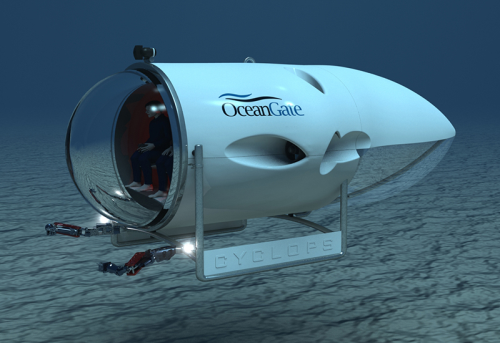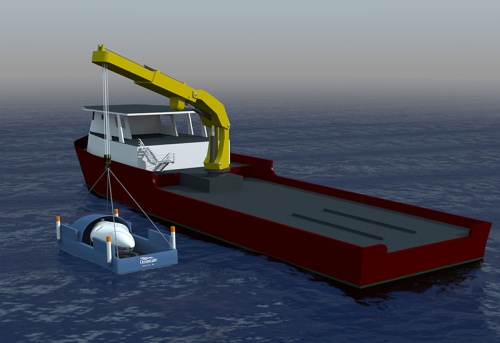

Under a contract issued to Boeing Research & Technology (BR&T), OceanGate, the Applied Physics Laboratory at the University of Washington (APL-UW) and Boeing have validated the basic hull design for a submersible vehicle able to reach depths of 3000 m (9800 ft).
|
Recent advances in material science, manufacturing and testing facilities that combine innovative engineering processes have allowed for a unique collaboration between OceanGate, Boeing and the APL team to complete the feasibility study and move the process to the manufacturing stage. |
| Stockton Rush, CEO, OceanGate |
The Cyclops submersible will feature a 7 inch thick carbon fibre composite hull, manufactured using proprietary Boeing fibre placement technology.
The ability to accurately place thousands of individual strips of pre-impregnated fibre will overcome many of the hard to control variables surrounding traditional filament winding processes, OceanGate reports, and permit the hull to withstand the very high compressive loads at 3000 m (300 bar/4300 psi).
The use of carbon fibre composite will also help make Cyclops significantly lighter than other subsea manned submersibles, OceanGate claims, making deployment operations faster, easier and cost-efficient.
Cyclops features a large 180° borosilicate glass dome and will allow its five crew members to observe underwater environments for up to 8 hours.
When commercially available in 2016, Cyclops will be the only privately owned deep-water (greater than 2000 m/6600 ft) manned submersible available for contracts. A follow on 6000 m version is slated for completion in the fourth quarter of 2016.
A new era of oceanic exploration
Operating at depths beyond 1000 m with remotely operated vehicles (ROVs) is extremely difficult as they require large heavy tethers and specialised support vessels, OceanGate explains. Using a patent-pending submerging Launch, Retrieval and Transport (LRT) platform, OceanGate says it can operate a manned vehicle with ships of opportunity at much lower costs than most other manned vehicles and, in many cases, even less expensively than ROVs.
With the ability to be quickly and affordably deployed around the world, Cyclops could usher in a new generation of oceanic exploration and study.
"The research, military and commercial markets need more vehicles for subsea exploration," says Stockton Rush, CEO of OceanGate.
"OceanGate’s Cyclops submersible will usher in a new class of vehicle to help fulfill this need."






